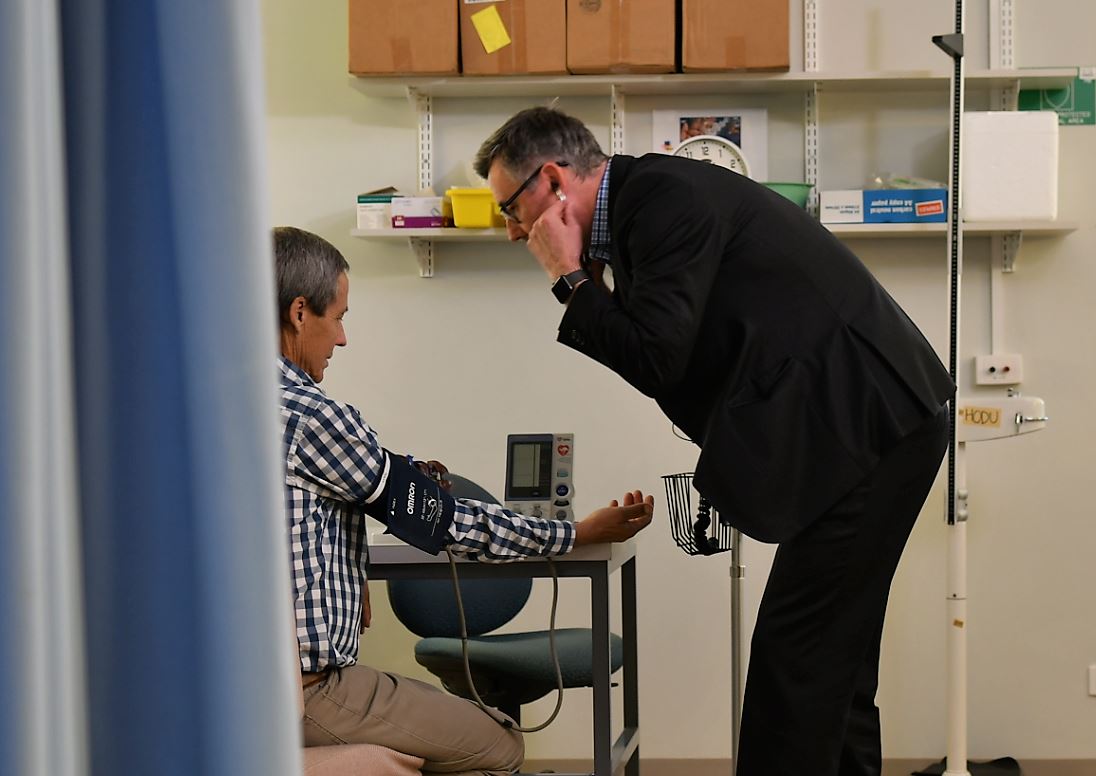
Life-threatening liver disease is skyrocketing in Australia, with alcohol and hepatitis C and now obesity-related fatty liver disease on the rise.
In the past 10-15 years, the number of chronic liver failure cases at South Australia’s public hospitals has increased more than three-fold from 422 in 2001 to 1441 in 2015. Meanwhile, obesity-related liver disease is expected to become a modern epidemic by 2050.
Now Australia’s ³Ô¹ÏÍøÕ¾ Health and Medical Research Commission (NHMRC) has announced major funding for researchers at Flinders University and their partners at several major SA and WA public hospitals to develop a model of care to improve outcomes for these at-risk patients.
“With the average age of death of these patients in their mid-50s, this represents a huge loss for individuals, their families and for the community,” says Flinders University Associate Professor Alan Wigg, the lead investigator in the $900,000 combined partnership grant.
“The program we’re developing will aim to address the elephant in the room, that is the economic and health system cost of these patients and their devastating disease,” he says. “It will help to address the multiple and complex barriers that prevent health systems from being able implement many of the highly effective treatments that currently exist.”
³Ô¹ÏÍøÕ¾ly, more than 6 million Australians suffer from chronic liver disease with more than 7000 deaths a year – all part of the effects of chronic conditions such as alcohol, hepatitis C, and non-alcoholic fatty liver disease (NAFLD).
A previous Deloitte study indicates the cost of managing the rising tide of chronic liver disease – including lost productivity – now exceeds $50 billion a year in Australia alone.
A previous trial by Flinders University, Flinders Medical Centre and other SA Health researchers showed that patients managed under a chronic liver failure program supervised by liver specialists within a coordinated care model had a 48% lower rate of liver-related emergency readmissions and significantly improved (67.7% versus 37.2 %, p=0.009) three-year survival than patients managed with standard care.
Not being managed in the hospital with a coordinated care model was independently associated with a 2.5-fold higher risk of mortality.
In an influential small randomised pilot trial, the research team previously demonstrated some important clinical benefits of managing this patient group with a different style of care. The “co-ordinated care model” was associated with improvement in quality of care and encouraging trends towards less emergency admissions and lower mortality.

“We argue that some simple measures, including regular contact with specially trained nurses, can greatly improve outcomes for this chronic condition, which sometimes is poorly understood and mismanaged by patients and their medical and nursing systems,” says Associate Professor Alan Wigg, an FMC gastroenterologist and researcher at the Flinders University.
The NHMRC Partnership Project maximises the impact of research funding through key collaborations that ensure rapid translation of research to the benefit of patients and health-care systems, says Flinders University Deputy Vice-Chancellor (Research) Professor Robert Saint.
“Based on previous pilot studies, expanding this research into a multicentre trial is aiming to result in fewer liver-related emergency department visits and fatalities,” Professor Saint says. “Further research on liver disease, including cirrhosis, could help patients to lead better lives and present less frequently for emergency treatment at our hospitals.”
The new project aims to reduce emergency department admissions, improve mortality rates, give patients more nursing support following discharge and more health information and better general quality of care. It is hoped that benefits will also be reduced overall cost to the health system.
Cirrhosis is a very serious and complex form of liver disease which is often not well managed, adds Associate Professor Leon Adams, from the Sir Charles Gardiner Hospital in Perth, which is one of the four Australian hospitals involved in the latest research.
“Non-alcoholic fatty liver disease (NAFLD) affects one in four Australian adults and has been increasing in parallel with the rising prevalence of obesity and diabetes in the community,” says Associate Professor Adams.
“A minority of people develop cirrhosis, however this appears increasingly common with NAFLD cirrhosis the fastest growing indication for liver transplantation in Australia and New Zealand.”






